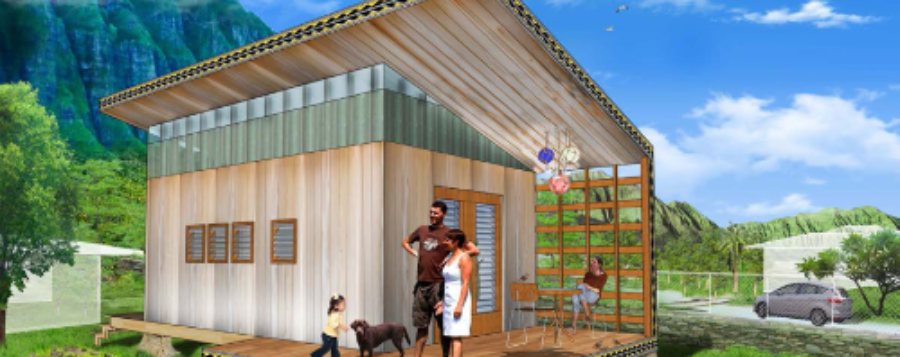Construction is all the rage these days. Unfortunately for many residents, luxury developments account for the lion’s share of new construction, while affordable housing is about as elusive as a vacant parking stall in Kaka‘ako. To increase housing opportunity for a greater segment of the population, Honolulu Mayor Kirk Caldwell signed an ordinance in 2015 approving accessory dwelling units, or ADUs. The secondary dwellings—often referred to as “‘ohana units” in Hawai‘i—can be up to 400 square feet for lots that are 3,500 to 4,999 square feet and 800 square feet for lots 5,000 square feet or larger. An ADU can be built in a residential neighborhood and include full kitchen and bathroom.
Following a model for green building called the Living Building Challenge, Architects Hawaii developed a design concept that sets a new benchmark for sustainable ADU building. As part of its pro bono work, Architects Hawaii partnered with Hawai‘i Appleseed Center for Law and Economic Justice to build an efficient and sustainable ADU in east O‘ahu. Using the criteria for Living Building Challenge certification as a guide, the ADU demonstration project addresses seven areas of sustainability in the built environment: water conservation, energy efficiency, safe and responsible material use, health and happiness, equity in the community, sense of place and inspirational beauty. This ADU is more than just a place to call home; it’s an affordable housing solution that also gives back to the community. —Kevin Whitton




